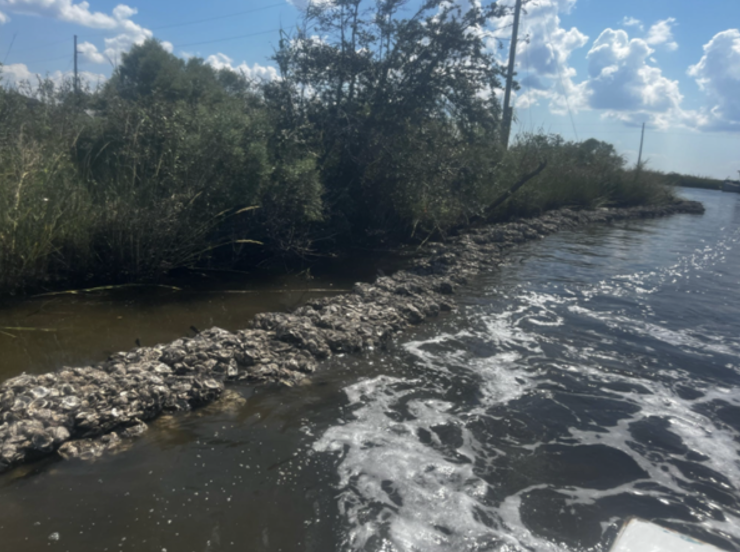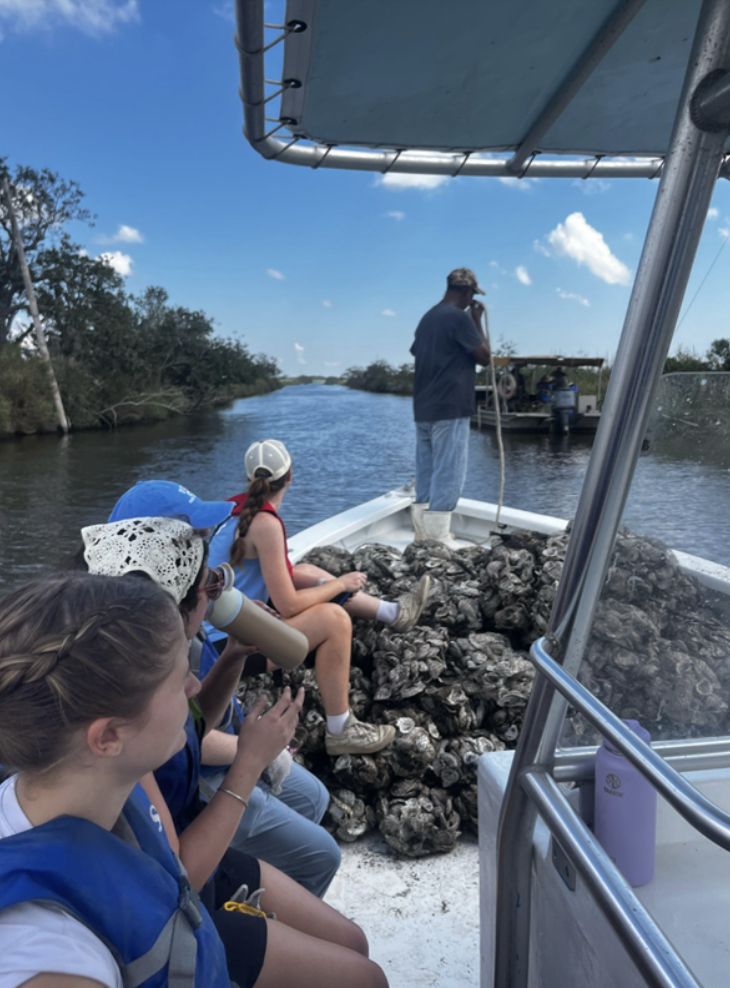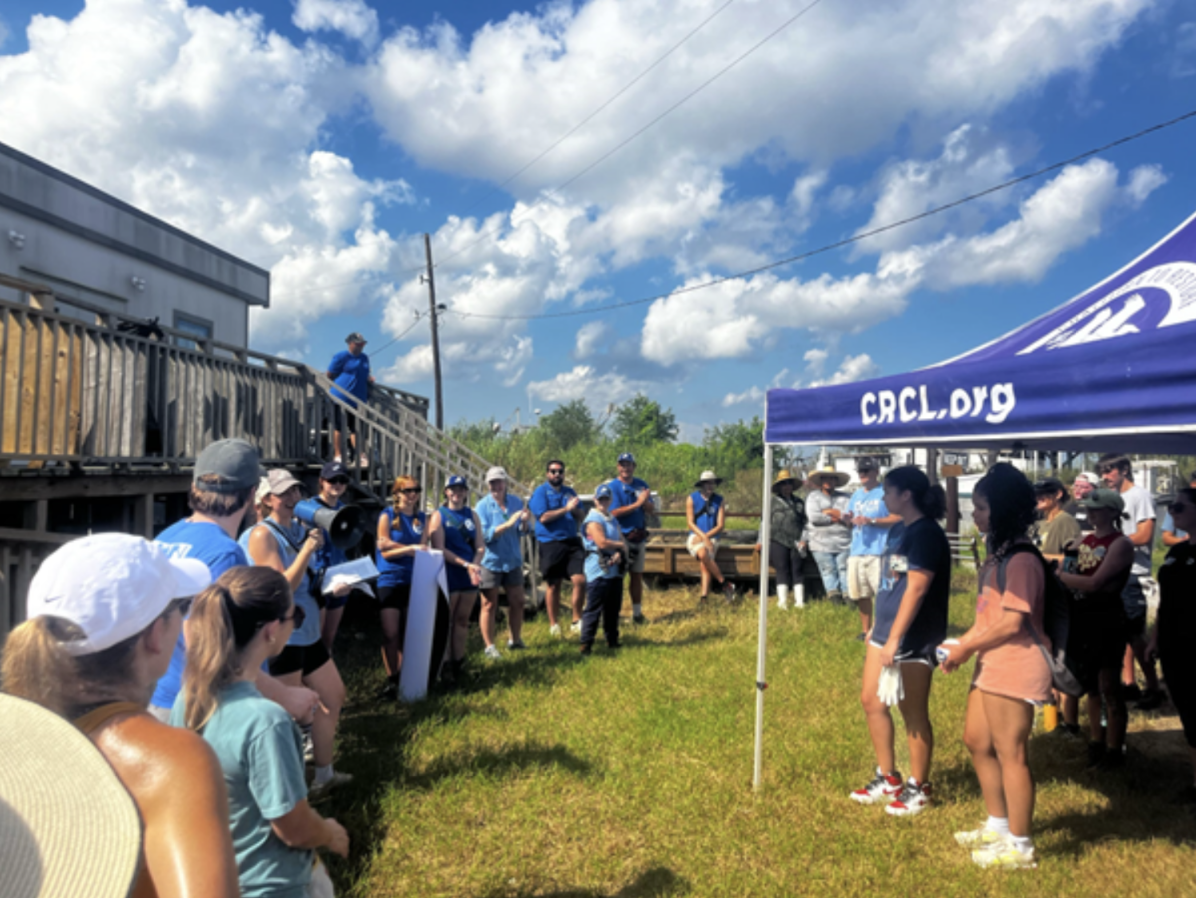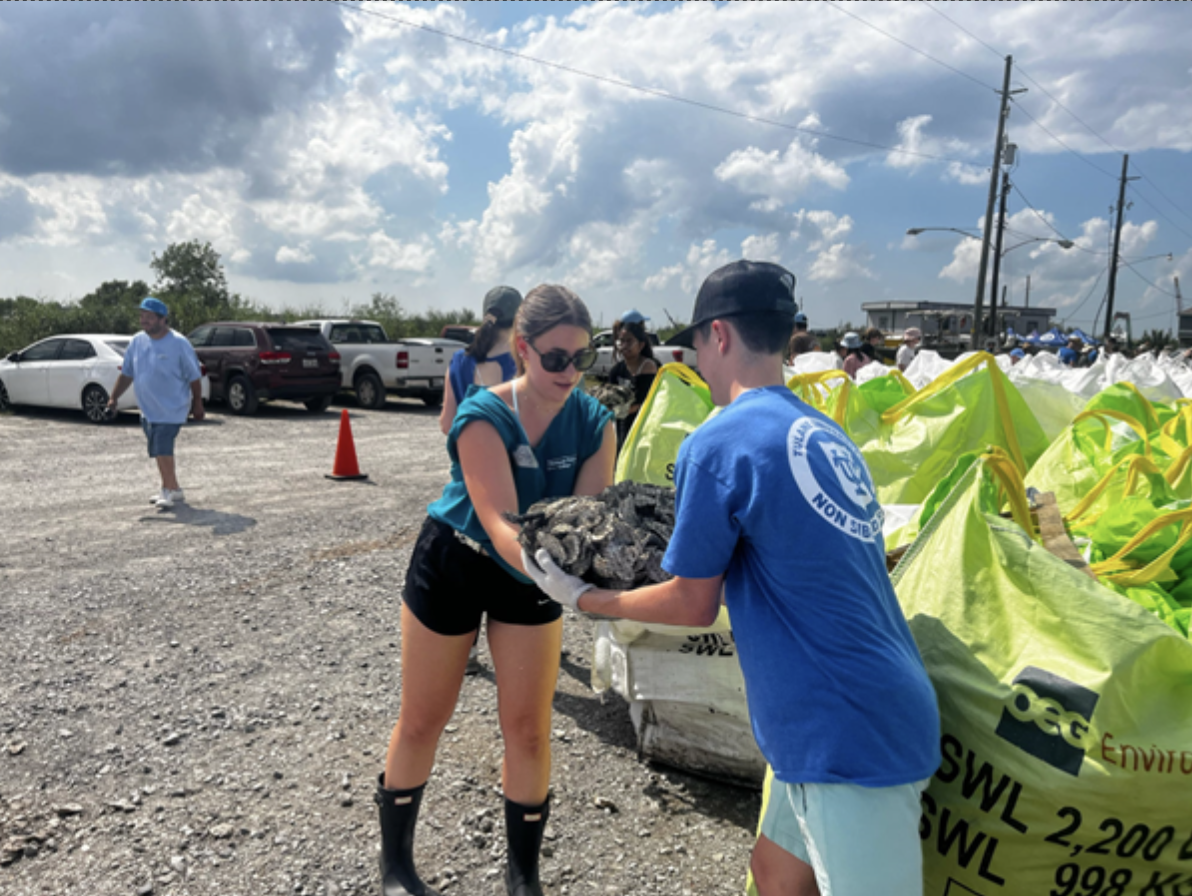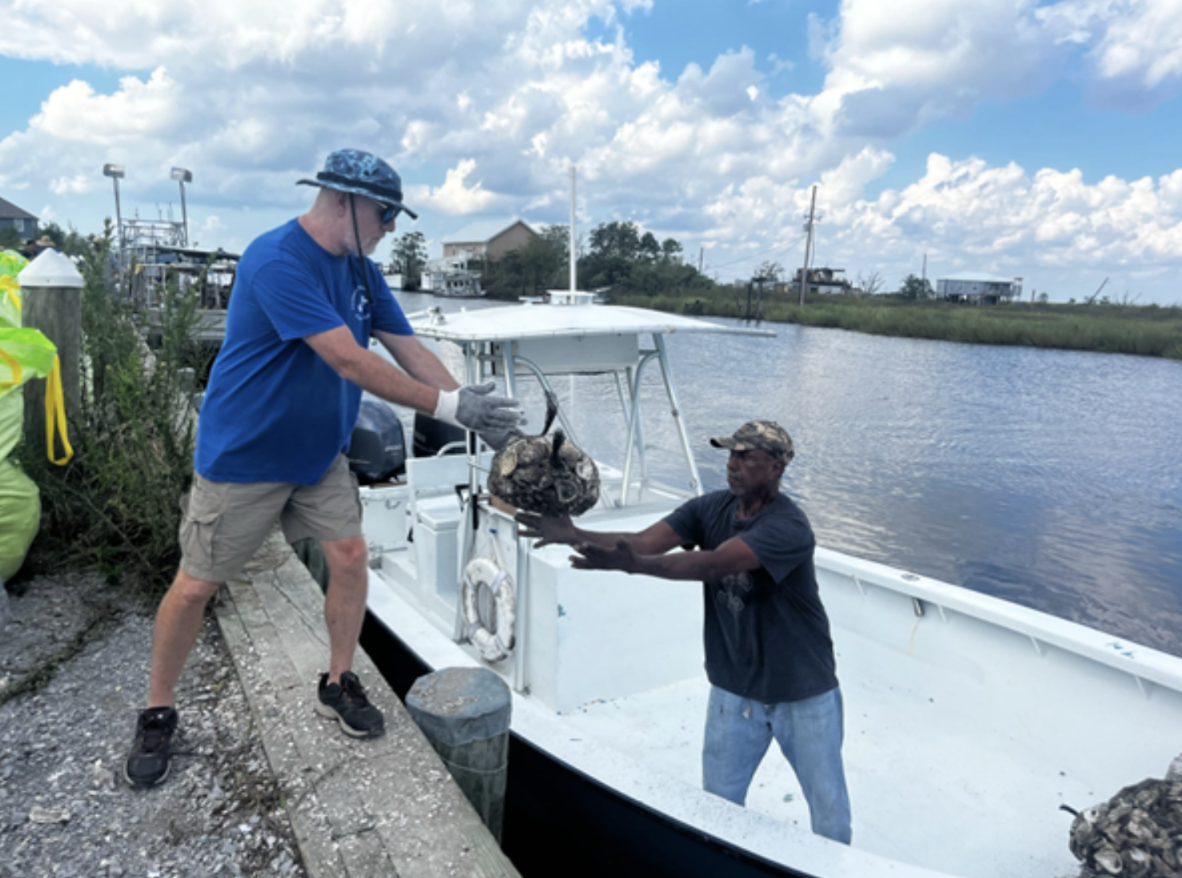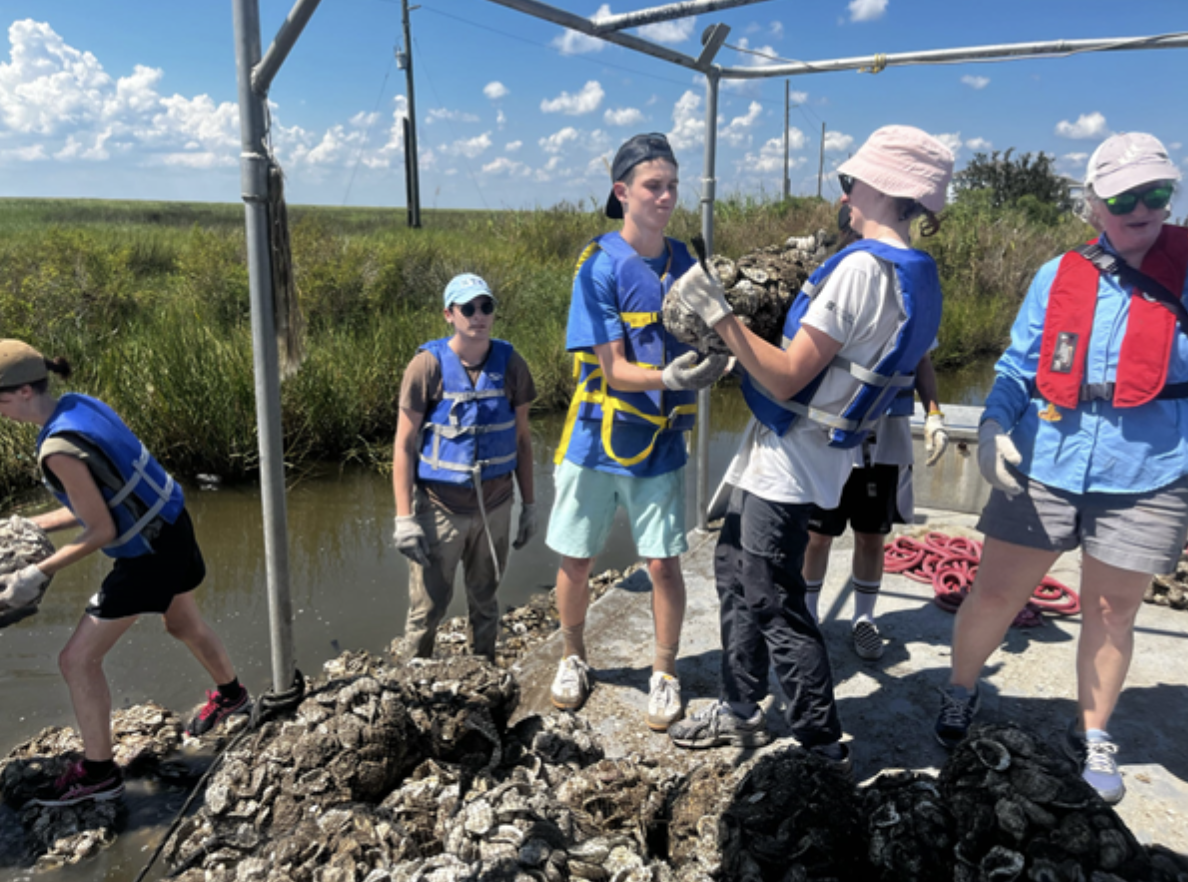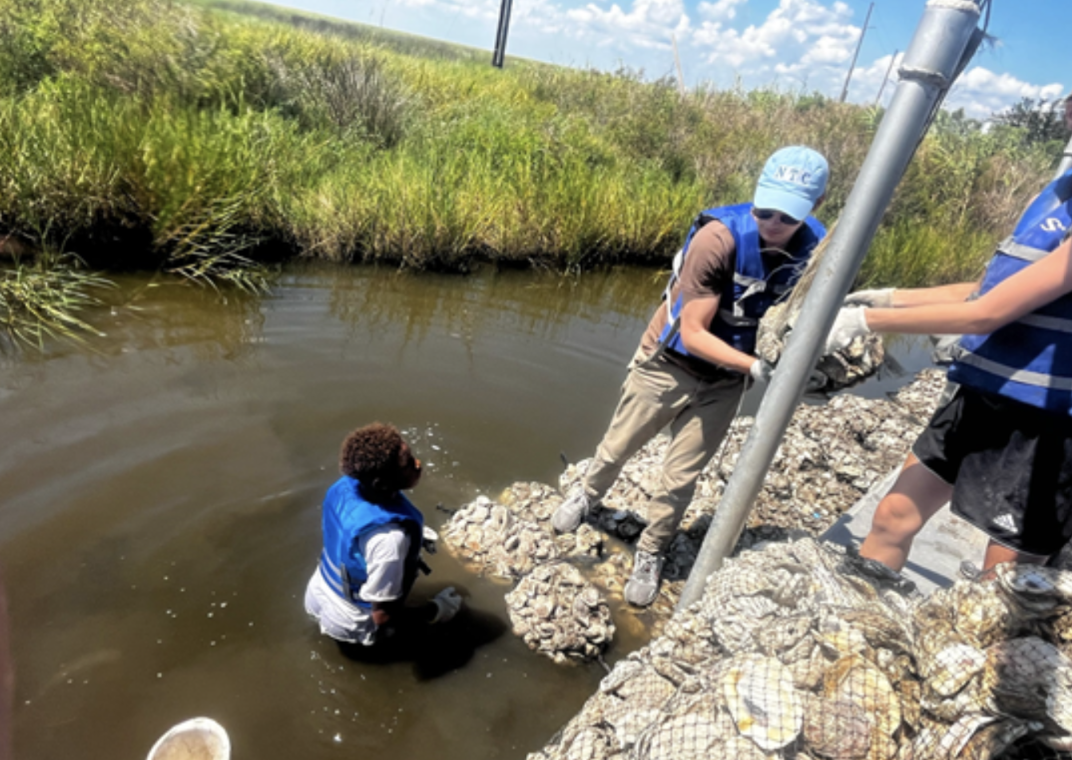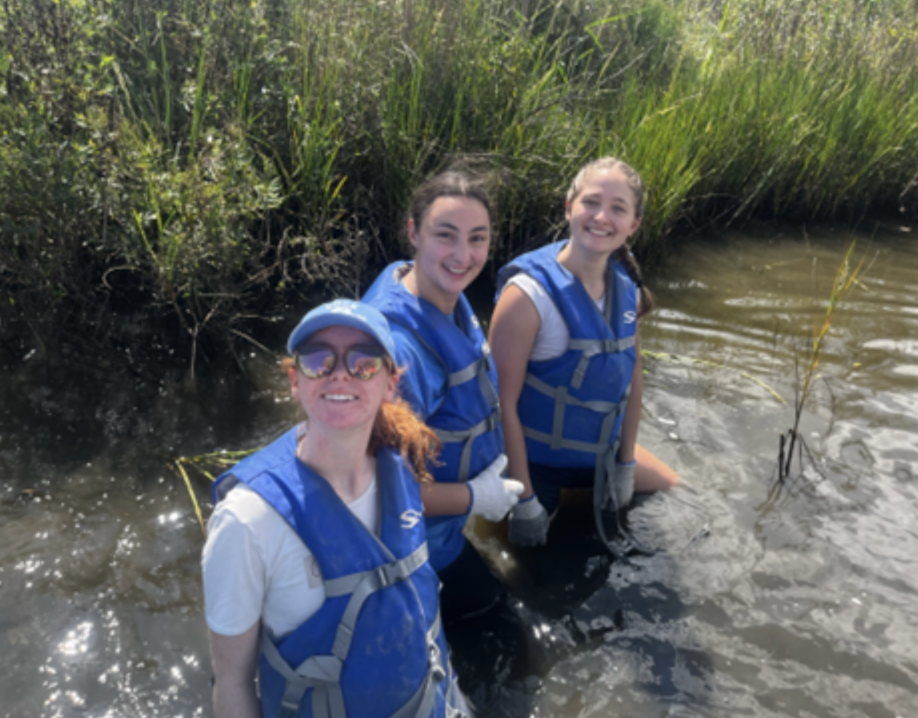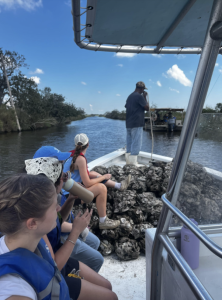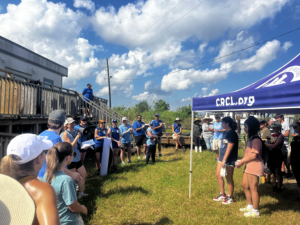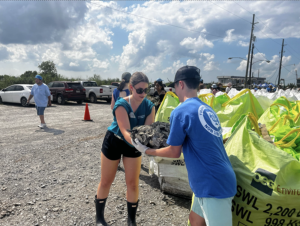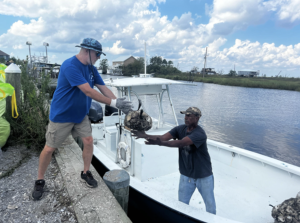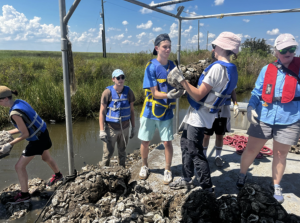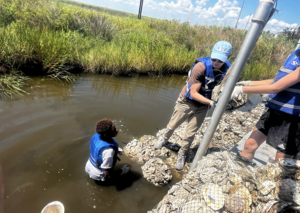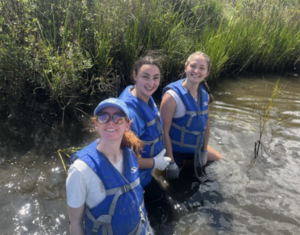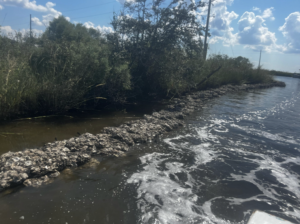Last month, students from Tulane University volunteered with the Coalition to Restore Coastal Louisiana as part of the course Indian Tribes on the Bayou taught by Laura Kelley, adjunct professor of history.
The course is one of two required classes in the Health Equity and Indigenous People Scholar Society, offered to First-Year Honors Scholars in the fall semester.
The CRCL is a nonprofit organization dedicated to preserving Louisiana’s wetlands, ecosystems and coastal communities. CRCL raises awareness and implements sustainable restoration solutions through a variety of volunteer programs.
One key volunteer effort is the Oyster Shell Recycling Program, which began in 2014. This program collects oyster shells from participating New Orleans restaurants and at public drop-off locations. After cleaned and cured, the shells are used to build oyster reefs along Louisiana’s coast. These reefs help to recreate natural habitats, stabilize shorelines and guard against land erosion.
On Sept. 21, a group of students and professors boarded a bus to Port Sulphur, Louisiana to support the Atakapa-Ishak Grand Bayou Indian Village. The volunteers witnessed how rising waters were intruding on their land and threatening the homes of the Atakapa-Ishak Tribe.
“The land looked like someone had taken bites out of it,” Saanvi Nair, a freshman in Dr. Kelley’s class, said. “Some areas were extremely dense, and others not so much. Some areas were so barren there was nothing but burnt grass with no appearance of any sort of flora growing there in the future either. The water was also slightly murky and had debris in it from the recent hurricane.”
Due to the loss of land by saltwater intrusion and climate change, some members of the Tribe have been forced to relocate to other areas.
During the event, students, professors and volunteers formed a long assembly line to pass 30 to 40-pound bags of oyster shells onto a boat.
Once the boat was loaded to maximum capacity, the students and other volunteers took it down to where the land needed to be protected. Some volunteers jumped into the shallow water while others stayed on the boat, working together to stack the oyster shells in the water to form a protective barrier and to help safeguard the land from erosion.
“Passing the oysters from one person to another is not for the weak,” Nair said. “It was extremely tiring, and I noticed a lot of scratches on my arms after we got back. That being said, it was definitely a bonding experience for our class and made us feel more connected to the cause.”
To support CRCL’s restoration efforts, check out their website or consider dining at restaurants that participate in the Oyster Shell Recycling Program.



